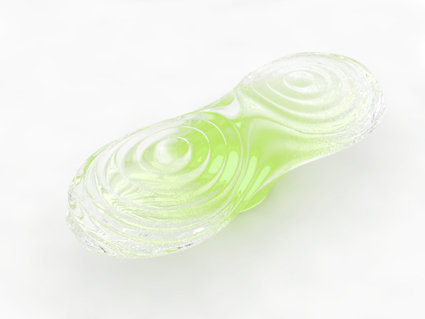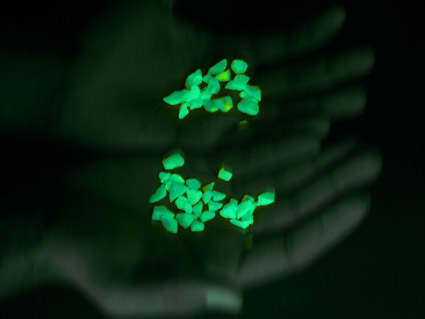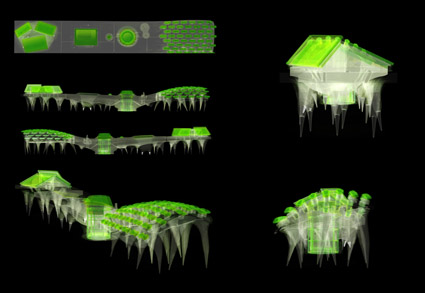Biennale 2010 / topic / “People meet in architecture” / Venice Biennale / 2010 / International pavillon / Arsenal / © R&Sie(n)
Components of after glowing as UV radiation sensor
Isobiot®ope
Meeting someone means facing the unknown, the strange, or even confronting your own repulsion at negotiating unfamiliar surroundings. It’s neither comfortable nor pleasing. It means crossing a heterotopic space where the passage itself is the only way to define yourself in relation to what’s already there.
This involves consideration of risk and a determination of whether or not to go through with it.
Meeting doesn’t mean plunging into a masked carnival, or huddling in a dark room, as if in a ceremony meant exclusively for a sum of individualities. It means daring to risk the unknown together.
“I remember the inaccessible zone and the room where wishes are granted in the Tarkovsky’s movie Stalker; a place you enter after crossing a territory where the gods clashed with humanity – we still don’t know who won that battle. The truce is unstable. Nothing can be discerned but sweat and silence, like climbers roped together, seeking to transgress the forbidden. The fence simultaneously protects those who are still there, about whom we know nothing, and those who dare venture in without knowing how to make use of what they may find there. At the end of the journey, amid the humid dilapidation, looms this Room of Wishes, where architecture is precisely the meeting point…”
R&Sie(n)’s apparatus is something similar, touching something which could simultaneously intrigue, attract and repulse you. The meeting point is not pretending to be safety.
But it’s also a fragment of the design of “thebuildingwhichneverdies” commissioned by the Zumtobel Group for its Thorn subsidiary.
This building is a nocturnal observatory pivoting on itself. This research laboratory is intended to analyze human beings’ physiological and ocular adaptation to the dark, in order to be able to reduce urban light pollution. This lab is aimed at the moon when it’s above the horizon, to take advantage of the one-lux minimum moonlight and even amplify it.
But at night this lab restores the light intensity of daytime by discharging UV sensor units located on all the exterior surfaces. Thus, their phosphorescent components (Isobiot®opic oxide pigment), populated on all its outdoor surfaces, report on solar activity, its degree of dangerousness according to its variations of intensity and specific nature (UV – A,B,C).
The components afterglow as a detector, an architectural Marker of the mutation of our environment and occur as a signal of UV human pathologies.
The level of UV which has crossed the Ozone layer is only revealed with a gap of time, after people are plugged into the shadows of the day, in the death of the sunset, by the after glowing ghost, inter canem et lupum…
Project visible at: http://www.new-territories.com/laboratoryoflight.htm






